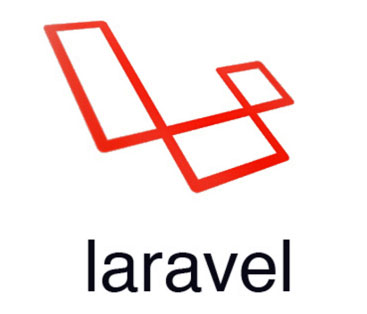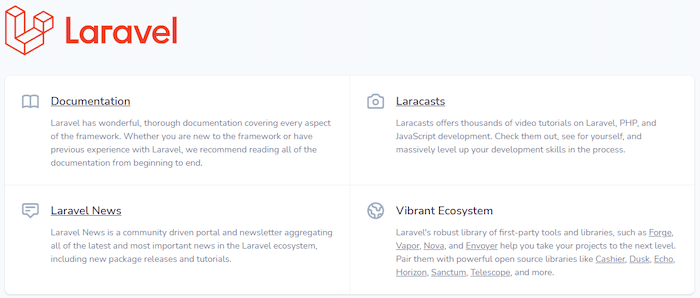
In this tutorial, we will show you how to install Laravel on Debian 11. For those of you who didn’t know, Laravel is an open-source PHP web framework, designed for the faster development of web applications. It is based on the Symfony framework. Laravel makes it easier to perform some common tasks such as authentication, routing, sessions, and caching. It has several useful features including, Artisan, Object-relational mapping, Template Engine, and many more.
This article assumes you have at least basic knowledge of Linux, know how to use the shell, and most importantly, you host your site on your own VPS. The installation is quite simple and assumes you are running in the root account, if not you may need to add ‘sudo‘ to the commands to get root privileges. I will show you through the step-by-step installation of the Laravel web framework on a Debian 11 (Bullseye).
Prerequisites
- A server running one of the following operating systems: Debian 10 or Debian 11.
- It’s recommended that you use a fresh OS install to prevent any potential issues.
- SSH access to the server (or just open Terminal if you’re on a desktop).
- A
non-root sudo useror access to theroot user. We recommend acting as anon-root sudo user, however, as you can harm your system if you’re not careful when acting as the root.
Install Laravel on Debian 11 Bullseye
Step 1. Before we install any software, it’s important to make sure your system is up to date by running the following apt commands in the terminal:
sudo apt update sudo apt upgrade
Step 2. Installing the Apache Web Server.
You need to have installed Apache Web Server on your system. Run the following command to install it:
sudo apt install apache2
Step 3. Installing PHP.
Now we add the SURY repository to your system:
sudo wget -O /etc/apt/trusted.gpg.d/php.gpg https://packages.sury.org/php/apt.gpg sudo sh -c 'echo "deb https://packages.sury.org/php/ $(lsb_release -sc) main" > /etc/apt/sources.list.d/php.list'
Then, install PHP 8.0 using the following command below:
sudo apt update sudo apt install php8.0
Additionally, the necessary packages will be installed, some of which are standard PHP 8.x extensions:
sudo apt install php8.0-common php8.0-gd php8.0-ldap php8.0-odbc php8.0-xsl php8.0-apcu php8.0-curl php8.0-gmp php8.0-opcache php8.0-mbstring php8.0-pgsql php8.0-imagick php8.0-memcached php8.0-bz2 php8.0-ds php8.0-imap php8.0-cgi php8.0-mysql php8.0-cli php8.0-fpm php8.0-xml
After the installation has been completed, you can confirm the installation using the following command:
php -v
Step 4. Installing Composer.
Composer is a dependency package manager for PHP. To use Laravel, first install Composer:
curl -sS https://getcomposer.org/installer | php
Next, move the Composer binary to the system path using the following command:
mv composer.phar /usr/local/bin/composer
Assign execute permission:
sudo chmod +x /usr/local/bin/composer
Verify the Composer version installed:
composer --version
Step 5. Installing Laravel on Debian 11.
Now we download the latest version of Laravel using the Composer:
cd /var/www/html composer create-project --prefer-dist laravel/laravel laravel
Next, set proper permissions and ownership to the Laravel directory:
chown -R www-data:www-data /var/www/html/laravel chmod -R 775 /var/www/html/laravel
Step 6. Configure Apache for Laravel.
Now create an Apache virtual host configuration file for Laravel:
nano /etc/apache2/sites-available/laravel.conf
Add the following lines:
<VirtualHost *:80>
ServerName laravel.your-domain.com
ServerAdmin admin@your-domain.com
DocumentRoot /var/www/html/laravel/public
<Directory /var/www/html/laravel>
Options Indexes MultiViews
AllowOverride None
Require all granted
</Directory>
ErrorLog ${APACHE_LOG_DIR}/error.log
CustomLog ${APACHE_LOG_DIR}/access.log combined
</VirtualHost>
Save and close the file then enable the Apache virtual host and rewrite module with the following command:
sudo a2enmod rewrite sudo a2ensite laravel.conf sudo systemctl restart apache2
Step 7. Accessing Laravel Framework Web Interface
Once successfully installed, you can access your website on http://laravel.your-domain.com. A congratulations page as follow should greet you:

Congratulations! You have successfully installed Laravel. Thanks for using this tutorial for installing the latest version of the Laravel framework on Debian 11 Bullseye. For additional help or useful information, we recommend you check the official Laravel website.